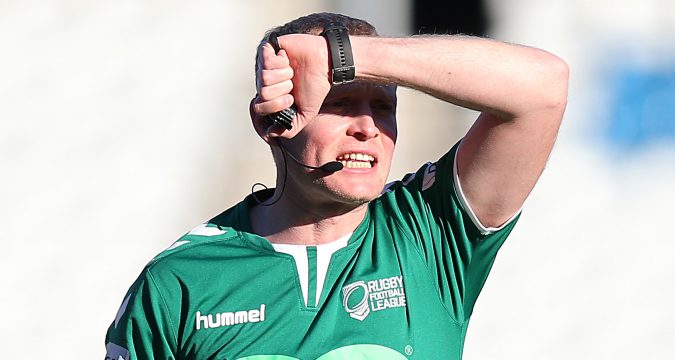
There are undoubtedly hundreds of potential solutions when it comes to the video referee issue plaguing rugby league at present.
To some, the video referee perhaps isn’t even a problem.
But when you’ve got 80-minute games taking over two hours, continuous stop-start affairs and the fizz being taken out of the sport we all know and love, it seems pretty obvious there are more than one or two issues to be resolved. So, with that in mind, here’s some ways to potentially clean up what is arguably Super League’s biggest problem right now.
Rid ourselves of the video referee completely
The most extreme, but increasingly popular in some quarters, option.
At present, it’s not difficult to feel that you are watching a completely different product when you watch a TV game compared to a non-televised one.
At games without the video referee, the sport is everything it promises to be; fast-paced, free-flowing and played at breakneck pace. When the video referee is in play, it’s not uncommon to see 80-minute matches lasting well over two hours. Scrapping the system altogether would be a bold move – and likely lead to calls to bring it back when referees make mistakes. But if the sport can accept referees make errors like the rest of us, is it a possible solution?
The captain’s challenge system
Take the referrals away from the referees who, at times, appear unconvinced by their own opinion and simply send straightforward decisions to the screen on instinct.
With this system – say, each side receiving three challenges per game – you limit yourself to the amount of times the game is stopped for forensic-style analysis and ensure there is a nice balance between fast pace and getting the correct decisions.
Furthermore – and this may be most appealing for referees – you take the decision-making away from the officials. No longer could fans, critics and tiresome column writers (!) complain the officials are stunting the flow of the game. If the players think they see an error or something amiss, they challenge it. Simple.
Fine-tune what the video referee is used for
When it was introduced way back when, the system was supposedly used to identify ‘clear, obvious errors’.
Can we say that anymore? Probably not; it feels like everything and anything is being sent to the video referee these days.
So, with one Super League coach calling for urgent meetings between coaches and referees to clarify the finer details of the obstruction ruling, would it be wise to have more in-depth discussions about what we use the screen for?
For example, offside and obstruction (but a more simplistic interpretation of the rule!) is fine. But players in touch when scoring? Let’s trust the ability of touch-judges for that.
By working out exactly what the screen is used for, you could easily streamline the problems the existing system has.
Get rid of referee’s call
‘I have a try’.
Well, clearly not, otherwise we wouldn’t be going to the screen for a three-minute delay. If referees are fairly confident they think a try has been scored, it’s a fair old waste of time sending it upstairs to check the finer points on something, surely?
Ref’s call could easily be removed and it would clear up a whole heap of ambiguity surrounding the system. That would then place the entirety of the power in the hands of the man with the replays at his disposal, rather than being guided by the opinion of someone who wasn’t sure enough to make the decision on their own in the first place.
